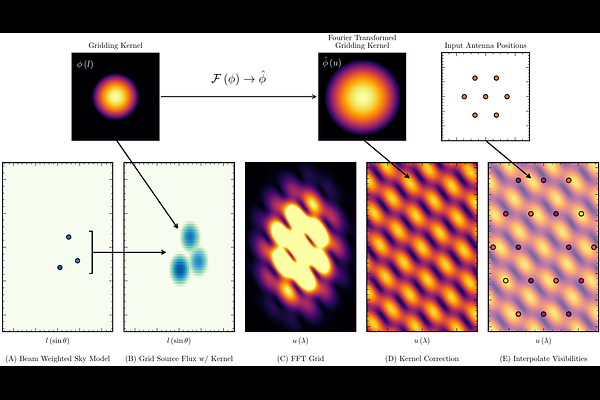fftvis: A Non-Uniform Fast Fourier Transform Based Interferometric Visibility Simulator

fftvis: A Non-Uniform Fast Fourier Transform Based Interferometric Visibility Simulator
Tyler A. Cox, Steven G. Murray, Aaron R. Parsons, Joshua S. Dillon, Kartik Mandar, Zachary E. Martinot, Robert Pascua, Piyanat Kittiwisit, James E. Aguirre
AbstractThe detection and characterization of the 21cm signal from the Epoch of Reionization (EoR) demands extraordinary precision in radio interferometric observations and analysis. For modern low-frequency arrays, achieving the dynamic range necessary to detect this signal requires simulation frameworks to validate analysis techniques and characterize systematic effects. However, the computational expense of direct visibility calculations grows rapidly with sky model complexity and array size, posing a potential bottleneck for scalable forward modeling. In this paper, we present fftvis, a high-performance visibility simulator built on the Flatiron Non-Uniform Fast-Fourier Transform (finufft) algorithm. We show that fftvis matches the well-validated matvis simulator to near numerical precision while delivering substantial runtime reductions, up to two orders of magnitude for dense, many-element arrays. We provide a detailed description of the fftvis algorithm and benchmark its computational performance, memory footprint, and numerical accuracy against matvis, including a validation study against analytic solutions for diffuse sky models. We further assess the utility of fftvis in validating 21cm analysis pipelines through a study of the dynamic range in simulated delay and fringe-rate spectra. Our results establish fftvis as a fast, precise, and scalable simulation tool for 21cm cosmology experiments, enabling end-to-end validation of analysis pipelines.